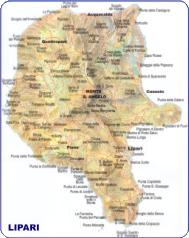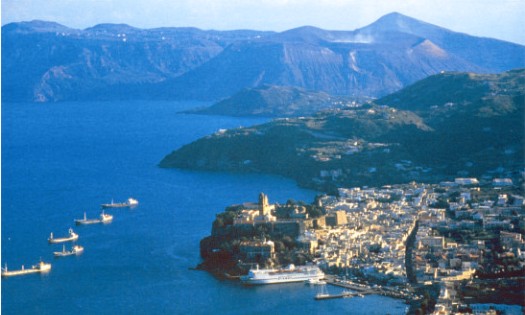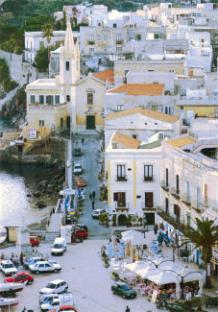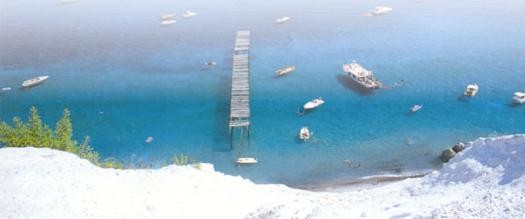Les Aventures Eoliennes

 Located 30 km north of Messina, Lipari is the biggest (37.6 sq km) and most populated (8725 inhabitants) island of the archipelago. It occupies the first rank on the geographic and historical point of view. Because of its importance, Lipari is considered the capital of the archipelago. Its name dates back to Liparos, the first king of the island, who had his castle there and founded the town to which he left his name. History: The town of Lipari spreads out from the promontory base of mount Rosa. Already at the end of the Neolithic and during the Bronze Age, people had settled in this area. During the Greek period, the center of Meliguni, also called Lipara, was being developed and lasted through the Roman period.
Located 30 km north of Messina, Lipari is the biggest (37.6 sq km) and most populated (8725 inhabitants) island of the archipelago. It occupies the first rank on the geographic and historical point of view. Because of its importance, Lipari is considered the capital of the archipelago. Its name dates back to Liparos, the first king of the island, who had his castle there and founded the town to which he left his name. History: The town of Lipari spreads out from the promontory base of mount Rosa. Already at the end of the Neolithic and during the Bronze Age, people had settled in this area. During the Greek period, the center of Meliguni, also called Lipara, was being developed and lasted through the Roman period.
The Normans later made it a bishopric. During the Middle ages and until our modern era, the town was fortified, surrounded by a great wall dominated by an imposing castle.
The Aeolian archaeological museum, which is scattered in some of the rooms of this castle, in the curie of the archdiocese and in a few buildings close of where it stands on a rhyolithe rock, partly vitreous, which rises from Dianaís flat coast and leans with a steep partition into the sea, thus forming two natural harbors: Marina Lunga in the north and Marina Corte in the south. The museum is separated in many sections of which one dedicated to prehistoric and protohistoric artifacts, another for epigraphical material, another on Greco-roman archeology, the next one on underwater archeology and finally one on volcano logy where they explain the geology of the Aeolian Islands.
Lipari has a pretty complex volcanic origin. The superimposed layers of various elements and the relief which belong to different eras allow us to deduct that the volcanic activity has been very diverse with the eruptions of many volcanoes, with the effusion of different matter and with intervals of long periods of inactivity. The last eruption has been set apart by its abundant stream of obsidian, black glossy stone, which was exported in great quantity. The pumice is the only one still being exported and the resources spread out on the sides of Mount S. Angelo. Lipariís population is divided in five agglomerations of houses: Lipari itself, Canetto, the suburb of Acquacalda, Quattropani and Pianoconte which are all linked by very good roads all along the coast around the island.




 Located 30 km north of Messina, Lipari is the biggest (37.6 sq km) and most populated (8725 inhabitants) island of the archipelago. It occupies the first rank on the geographic and historical point of view. Because of its importance, Lipari is considered the capital of the archipelago. Its name dates back to Liparos, the first king of the island, who had his castle there and founded the town to which he left his name. History: The town of Lipari spreads out from the promontory base of mount Rosa. Already at the end of the Neolithic and during the Bronze Age, people had settled in this area. During the Greek period, the center of Meliguni, also called Lipara, was being developed and lasted through the Roman period.
Located 30 km north of Messina, Lipari is the biggest (37.6 sq km) and most populated (8725 inhabitants) island of the archipelago. It occupies the first rank on the geographic and historical point of view. Because of its importance, Lipari is considered the capital of the archipelago. Its name dates back to Liparos, the first king of the island, who had his castle there and founded the town to which he left his name. History: The town of Lipari spreads out from the promontory base of mount Rosa. Already at the end of the Neolithic and during the Bronze Age, people had settled in this area. During the Greek period, the center of Meliguni, also called Lipara, was being developed and lasted through the Roman period.

